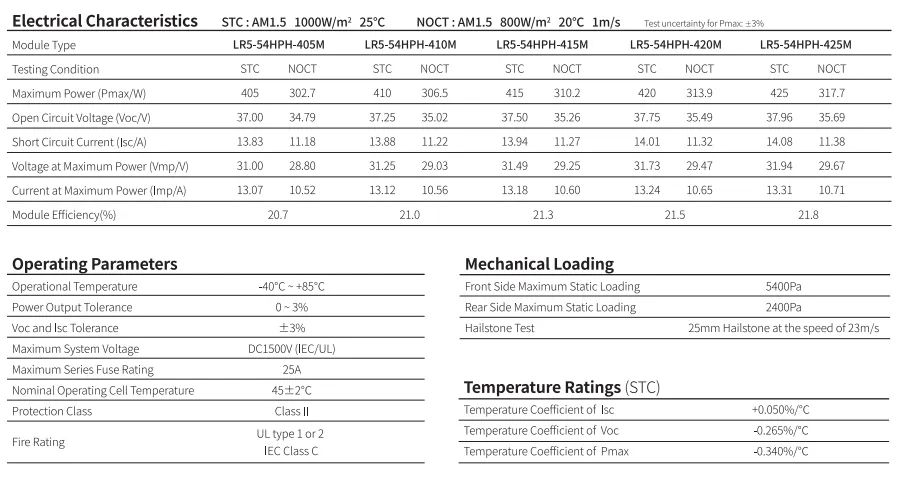typical solar panel dimensions
Understanding Typical Solar Panel Dimensions
Solar panels are a crucial component in the quest for cleaner and more sustainable energy. As renewable energy sources gain momentum globally, understanding the dimensions of solar panels becomes increasingly important for homeowners and businesses alike. This article delves into the standard sizes and dimensions of solar panels, the factors influencing these measurements, and their implications for installation and efficiency.
Standard Dimensions of Solar Panels
The dimensions of solar panels can vary significantly based on the type and efficiency of the technology used. However, most conventional photovoltaic (PV) solar panels are designed in the following typical dimensions
1. Size The most common size for residential solar panels is approximately 65 inches by 39 inches (165 cm by 100 cm). This size is prevalent due to its balance between efficiency and weight, making it relatively easy to install on various roof types.
2. Thickness Standard solar panels generally have a thickness of about 1.5 to 2 inches (3.8 to 5 cm). This thickness is mainly due to the protective glass layer, the solar cells themselves, and the backing material, which together ensure durability and weather resistance.
3. Weight The weight of a typical solar panel can range from 40 to 50 pounds (18 to 23 kg). The weight is largely influenced by the materials used in the construction of the panel, including the frame and glass.
Factors Influencing Panel Dimensions
1. Technology Type There are different types of solar technology, and each varies in size. For instance, thin-film solar panels tend to be lighter and more flexible than crystalline silicon panels, often leading to different dimensions. Thin-film panels can be made in larger dimensions since they are less constrained by the physical properties of silicon wafers.
typical solar panel dimensions

2. Manufacturer Variations Different manufacturers may produce panels with slightly varying dimensions, even if they follow the same technology. These variations can impact overall efficiency and installation requirements.
3. Efficiency Higher efficiency solar panels usually tend to be smaller in size but generate more power per square foot. This is a critical consideration for homeowners with limited roof space, as smaller, more efficient panels can be a better fit for maximizing energy output.
4. Purpose of Use The intended application of the solar panels can also influence their dimensions. For example, commercial installations might use larger panels to maximize energy production per unit area, whereas residential installations might favor standard-size panels more suited to roof configurations.
Implications for Installation
Understanding the typical dimensions of solar panels has significant implications when it comes to installation. Homeowners must assess their roof space, orientation, and shading to ensure that they can accommodate the solar panels optimally. Proper installation requires accurate calculations of the number of panels needed to meet energy consumption goals, considering the overall dimensions of the panels.
Moreover, knowing the weight of the panels is crucial for structural considerations, as roofs must support both the solar panels and the mounting equipment. A structural engineer may need to assess older buildings to ensure they can bear the load of the solar setup.
Conclusion
Solar panel dimensions are a vital aspect of renewable energy systems, influencing efficiency, cost, and installation logistics. As technology continues to evolve, understanding these dimensions helps homeowners and businesses make informed decisions about their solar investments. Considering the typical sizes and how they relate to various factors, potential buyers can better navigate the complex landscape of solar energy solutions, ultimately leading to a more sustainable future.
-
Navigating Off Grid Solar Inverter: From Use Cases to Trusted PartnersNewsAug.05,2025
-
Solar Edge String Inverter: A Wholesaler’s Guide to Inverter Technology SelectionNewsAug.05,2025
-
Microinverters: Revolutionizing Solar Energy UseNewsAug.05,2025
-
Future of Monocrystalline Solar Panel Efficiency: Latest Technological AdvancesNewsAug.05,2025
-
Solar Panels for House: A Complete Guide to Residential Solar EnergyNewsAug.05,2025
-
Panel Bifacial Performance in Snow and Low-Light ConditionsNewsAug.05,2025







